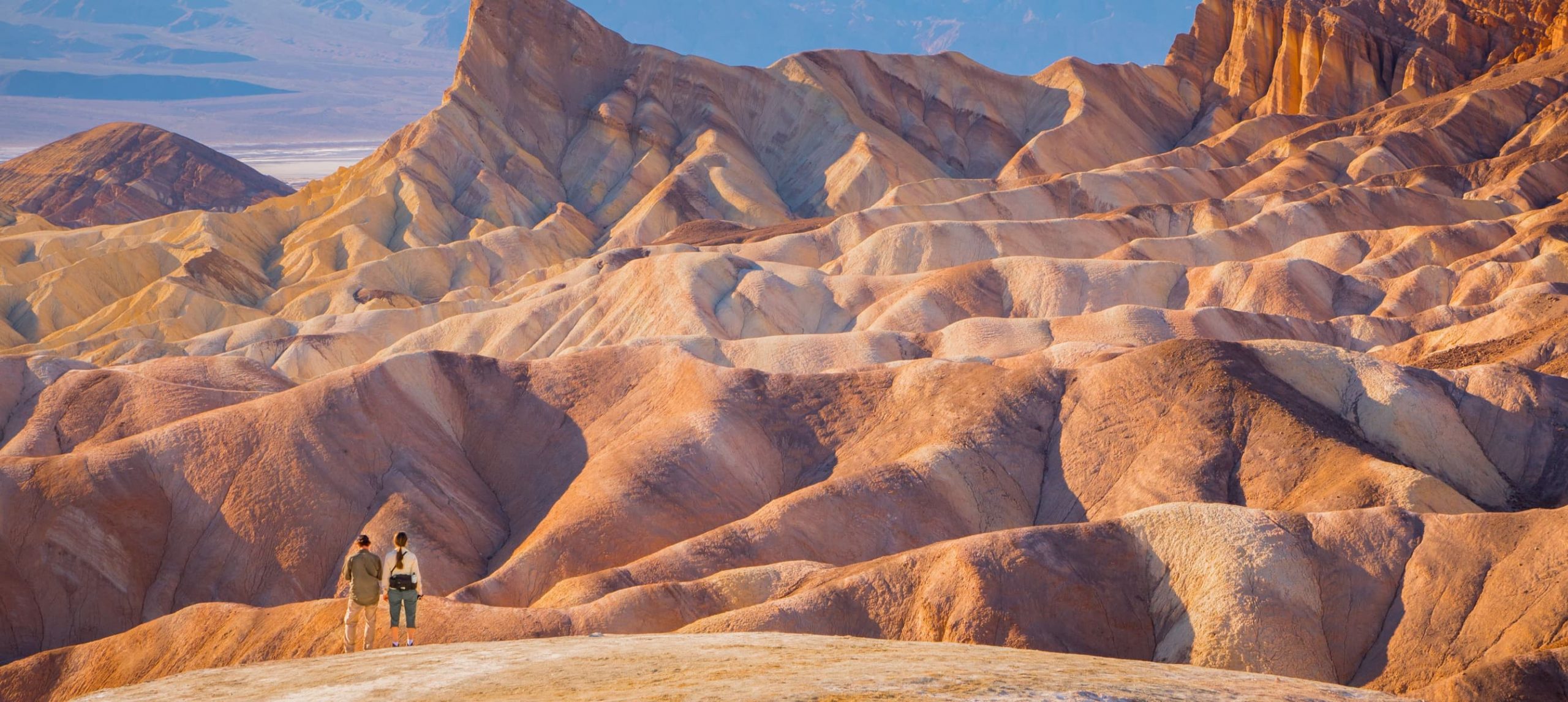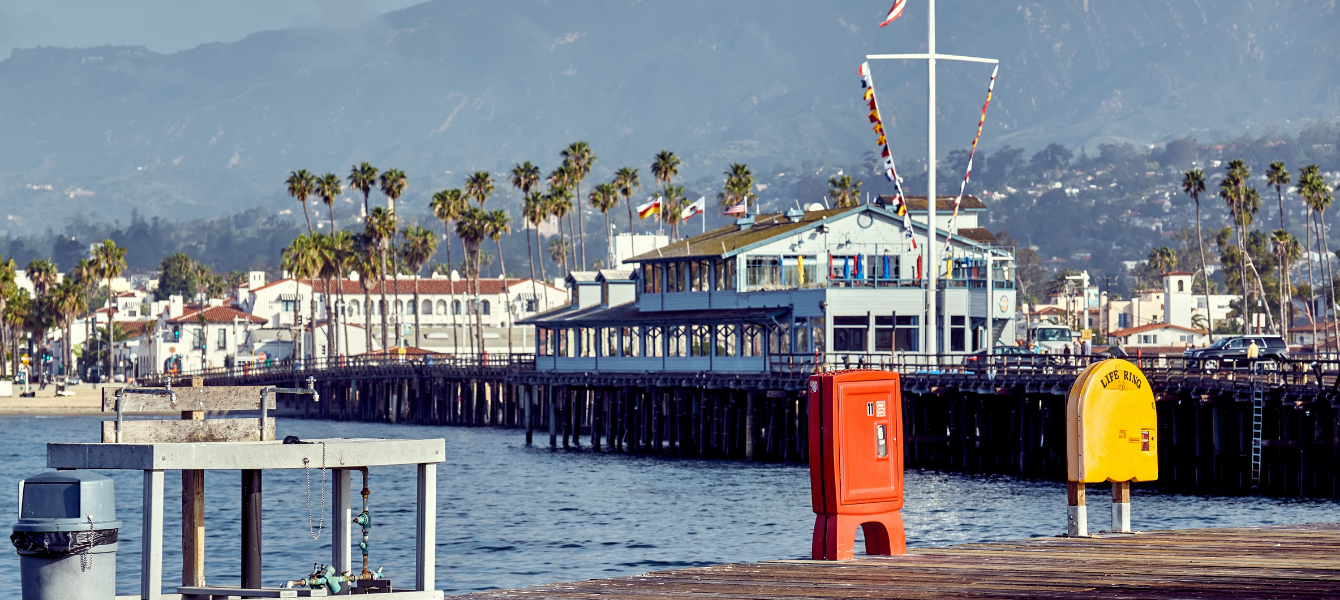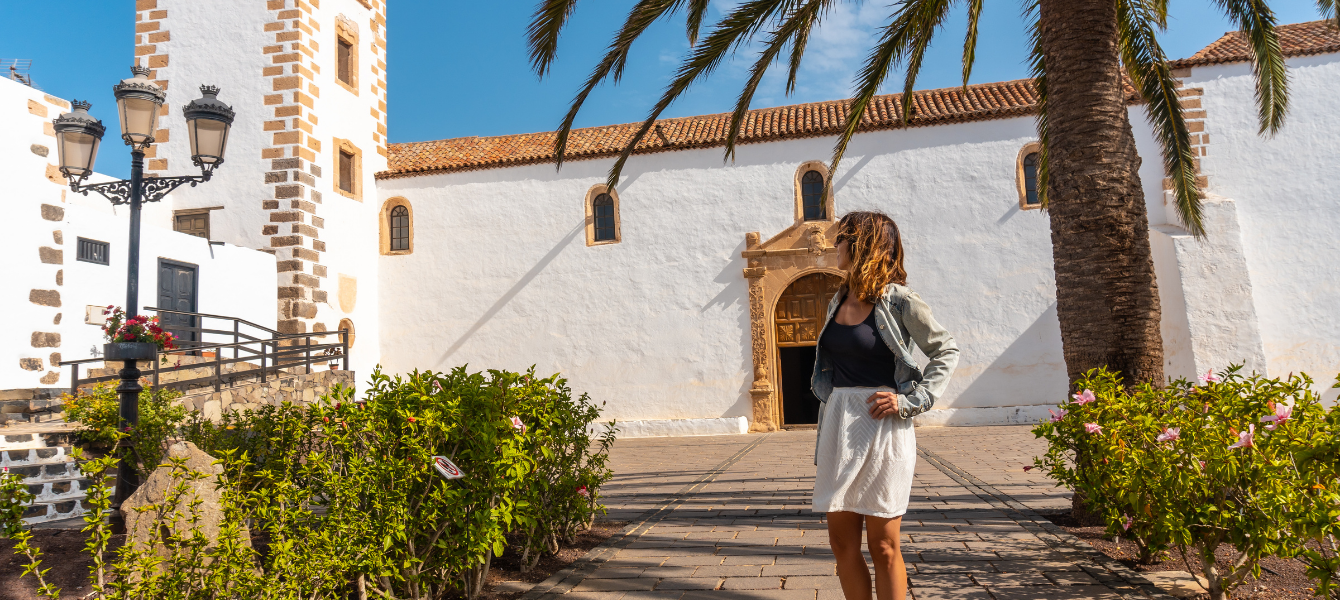California is home to nine national parks, each one offering a unique blend of stunning landscapes, rich wildlife, and thrilling recreational opportunities.
From the sun-kissed desert terrain of Joshua Tree to the awe-inspiring mountains and glaciers of Yosemite, California’s national parks showcase some of the most breathtaking scenery in the United States.
Whether you’re looking to see beautiful rugged coastlines, lush forests, fascinating wild creatures, or the largest trees on Earth, there’s a park that will meet your needs.
In this post, we’ll take a closer look at the nine most beautiful national parks in California, highlighting what makes each one special and providing tips for making the most of your visit.
So pack your hiking boots, your camera, and your sense of adventure, and get ready to explore some of the most awe-inspiring natural wonders in the world.
Fun Facts About California’s National Parks
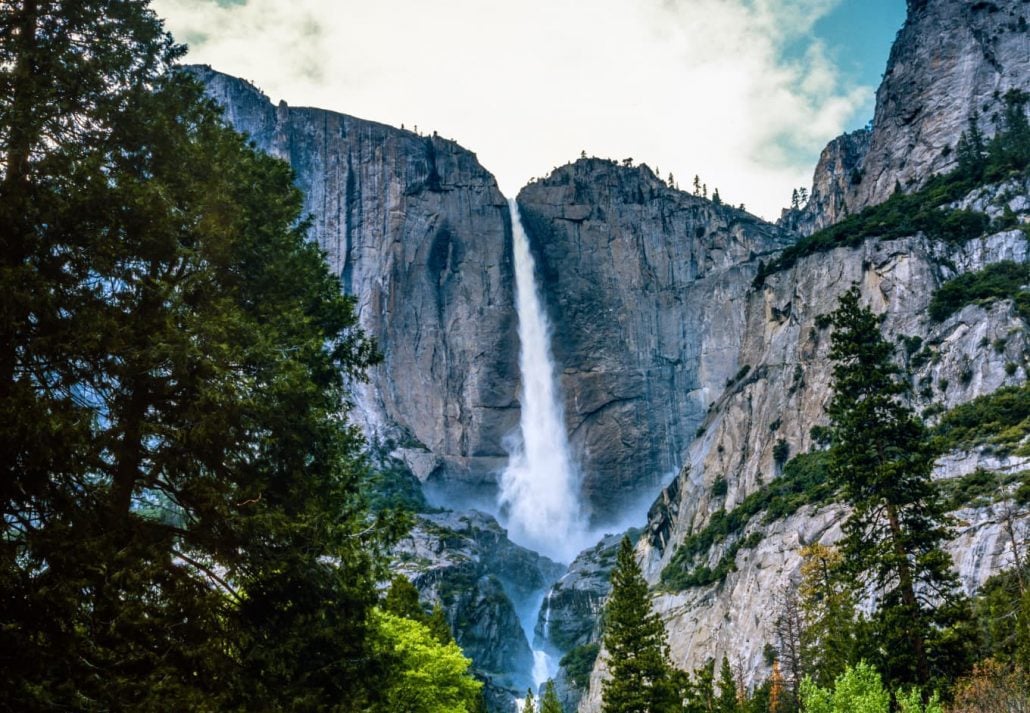
- Death Valley National Park is the hottest and driest place in the United States. The park actually holds the record for the hottest temperature ever recorded on Earth, 56ºC.
- Yosemite National Park was the US first government-protected park, designated a public trust by President Abraham Lincoln in 1864.
- Lassen Volcanic National Park is the only place on Earth that has all 4 types of volcanoes: shield, plug dome, cinder cone, and composite.
- Joshua Tree’s oldest rocks are between 1.4 and 1.7 billion years old.
- Established as a national park in 2013, Pinnacles is the newest national park in California.
- Yosemite National Park is home to one of the tallest waterfalls in the world, the Yosemite Falls, at 2,425 feet.
- Santa Cruz Island, in the Channel Islands National Park, is the largest island in California.
- The Redwood National Park is home to old-growth coast redwoods, which can live to be 2,000 years old and grow to over 300 feet tall.
- The Joshua Tree National Park is home to 750 species of plants.
- At 282 feet below sea level, Death Valley is the lowest point in North America.
- Sequoia is home to the tallest mountain in the U.S. (not including Alaska and Hawaii), Mount Whitney, at 14,494 feet.
California’s National Parks
The 9 Best National Parks in California
Joshua Tree National Park
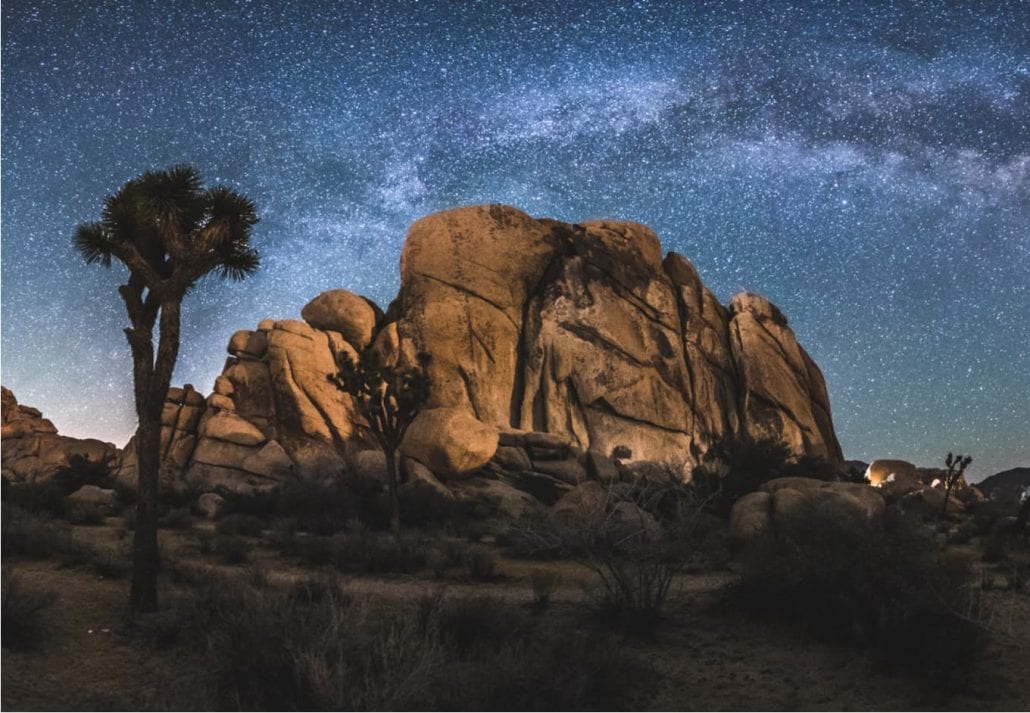
Joshua Tree National Park is a vast protected area in southern California. Encompassing a total of 795,156 acres, the park includes 429,690 acres of designated wilderness, including rugged rock formations and scenic desert landscapes.
This beautiful park covers two distinct desert ecosystems, the Mojave and the Colorado deserts, and was named after the Joshua trees native to the Mojave Desert.
One of the top ways to see the natural wonders of the Joshua Tree is by hiking. While exploring the park’s over 800 miles of trails, you’ll see a plethora of plants and animals, including marvelous bird species like the roadrunner, phainopepla, and mockingbird.
During the scenic hikes, you’ll also see sand dunes, dry lakes, flat valleys, dramatic mountains, exposed granitic monoliths, rugged canyons, and picturesque boulder piles.
While Joshua trees dominate the open spaces of the park, you’ll also get the chance to see piñon pine, California juniper, desert scrub oaks, and cacti.
Other activities here include rock climbing, wildlife watching, and especially stargazing. Joshua Tree National Park boasts some of the darkest nights in Southern California, making it the perfect to see the Milky Way with the unaided eye.
Location: 6554 Park Blvd Joshua Tree, CA
Best times to visit the Joshua Tree National Park: The best time to visit Joshua Tree National Park is in the spring (March to May) and fall (September to November) when the temperatures are mild and comfortable.
During the spring and fall, the wildflowers bloom, and the park’s unique rock formations are accentuated by the soft light of the sun.
Summertime (June to August) can be scorching hot, with temperatures reaching 38°C or more during the day. Winters (December to February) can be cold, with temperatures dipping down to freezing or below at night.
Recommended Read: 15 Best National Parks in The USA
Yosemite National Park
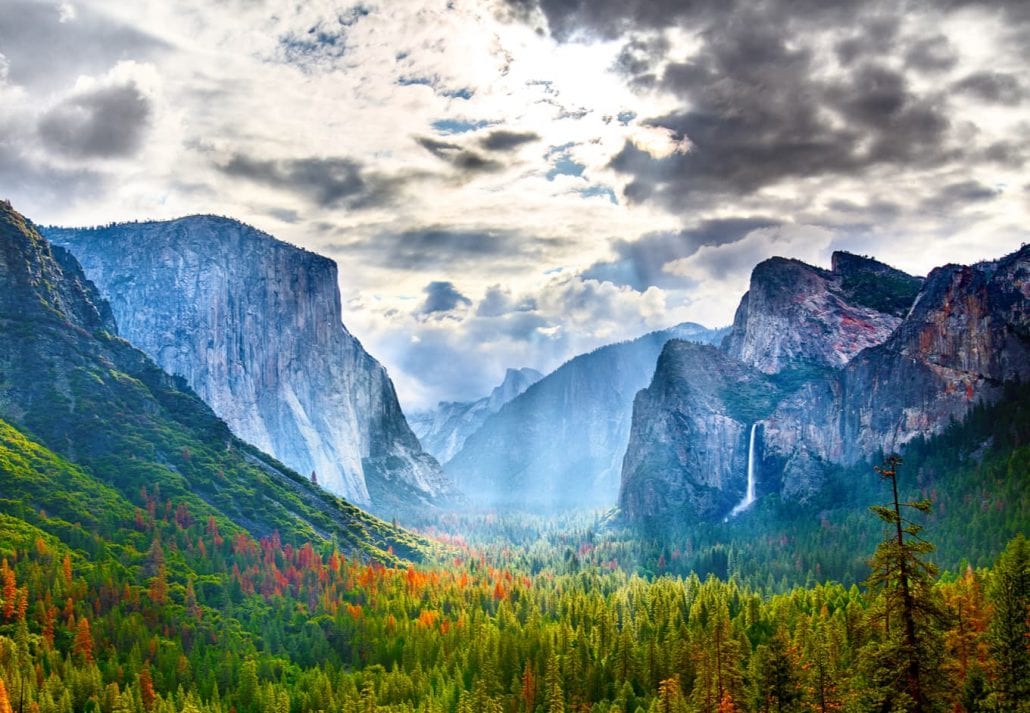
Located in the heart of the Sierra Nevada mountains, Yosemite National Park is California’s most visited park, having attracted 3.3 million people in 2021.
This achingly beautiful park covers an area of 1,169 square miles and is home to a wonderland of natural features like towering granite peaks, lush meadows, roaring waterfalls, sky-high sequoia trees, and roaring waterfalls.
Yosemite can be explored through 750 miles of scenic trails. During the journey, you’ll stumble upon precious gems designed by mother nature, such as the Mariposa Grove of Giant Sequoias, which is dotted with more than 500 mature sequoias.
There’s also the spectacular Tuolumne Meadows, surrounded by snow-dusted peaks and domes, and the Hetch Hetchy Valley, filled with delicate wildflowers.
Yosemite’s trails also offer great opportunities for viewing majestic wild creatures like black bears, mule deer, and rare Sierra Nevada bighorn sheep.
Yosemite’s most famous feature, however, is its stunning granite cliffs, including Half Dome and El Capitan, which attract rock climbers from around the world.
Take your experience to the next level by camping in one of Yosemite’s designated campgrounds. This is also an excellent opportunity to stargaze, as the park boasts one of the darkest skies in Southern California!
Check out this ultimate guide to Yosemite National Park for tips and inspiration that’ll help you plan your visit.
Location: Tioga Rd Hwy 120 & Hwy 140 Yosemite National Park, CA
Best time to visit Yosemite National Park: Late spring, especially May, is a prime time for visiting Yosemite National Park. The weather is pleasantly hovering around 20ºC, the flowers are blooming, the waterfalls are on their pick, and the summer crowds have not yet arrived.
Recommended Read: The Best Of Yosemite Lodging And Accommodation
Death Valley National Park
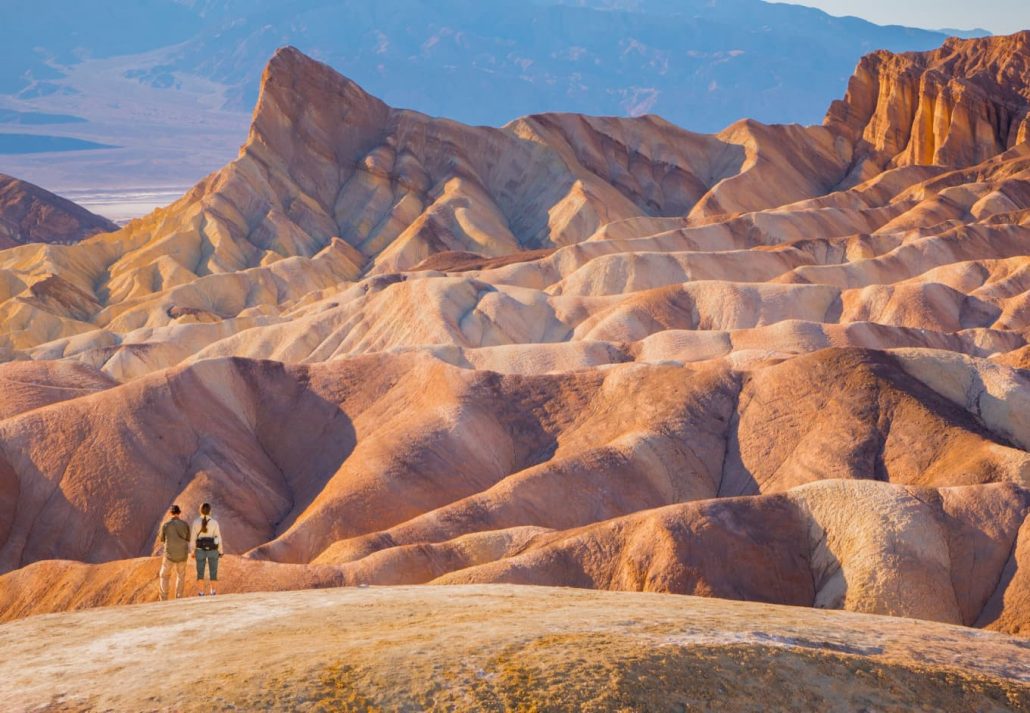
Death Valley National Park is California’s largest national park and the largest in the contiguous United States.
Straddling both eastern California and Nevada, and stretching across 3.4 million acres, the park protects the northwest corner of the Mojave Desert and comprises eye-popping salt flats, sand dunes, badlands, valleys, canyons, and mountains
Despite its foreboding name, Death Valley is home to an amazing array of plant and animal life. Here, you’ll get the chance to see bighorn sheep, coyotes, bobcats, kit foxes, cougars, and mule deer, as well as rare and endangered animals like the desert pupfish.
The park is also home to some of the stunning geological features, including the colorful and dramatic badlands of Zabriskie Point and the soaring sand dunes of Mesquite Flat.
Visitors to Death Valley can explore the park’s unique landscapes by hiking, biking, or driving along its many scenic roads, including the famous Artist’s Drive and the breathtakingly beautiful Dante’s View.
Location: Death Valley National Park, CA
Best time to visit Death Valley National Park: Spring (March to May) is the most popular time to visit Death Valley. During this season, the wildflowers are in bloom and the days are warm and sunny days.
You can also visit the park from November to March when the temperatures are milder and more comfortable.
During this time, the park experiences cooler temperatures and occasional rainfall, which makes it more pleasant for outdoor activities such as hiking, sightseeing, and camping.
Lassen Volcanic National Park
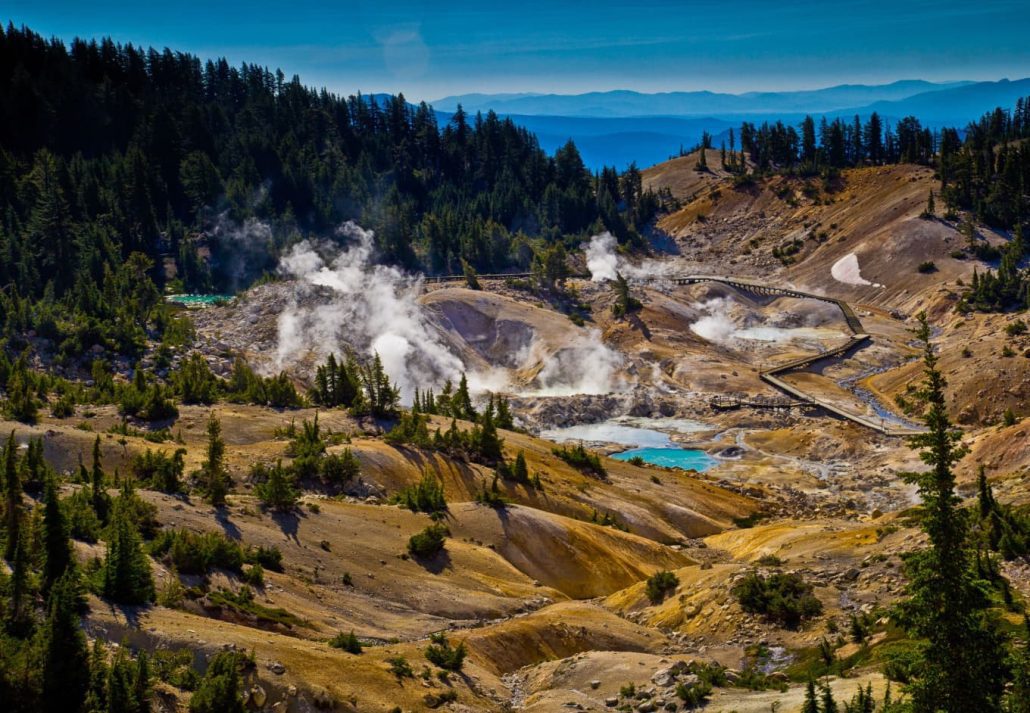
Lassen Volcanic National Park is a natural paradise waiting to be explored. Nestled in the northeast corner of California and covering an area of over 100,000 acres, the park boasts a spectacular variety of unique landscapes.
Here, visitors will get face-to-face with huge mountains created by lava flows, jagged craters, glaciated canyons, and glittering lakes.
On the eastern part of the park, a vast lava plateau that is more than one mile above sea level lies the Warner Valley. This area features hot springs, and large meadows that bloom with wildflowers such as iris, spotted coralroots, pyrolas, violets, and lupins.
The most awe-inspiring feature of the park, however, is Lassen Peak, the world’s largest plug dome volcano. This towering volcanic peak last erupted in 1915 and offers breathtaking views of the surrounding area.
Visitors can hike the park’s scenic trails and marvel at its stunning natural features, including the otherworldly landscapes of Bumpass Hell and the glistening waters of Emerald Lake.
Those seeking adventure can enjoy thrilling activities such as camping, rock climbing, and snowshoeing in the winter.
Wildlife enthusiasts will also find plenty to love in the park, with the chance to spot black bears, mountain lions, over 200 species of birds, and the Sierra Nevada red fox, one of the rarest mammals in California!
Location: Loomis Museum (Northwest Entrance): 29489 Lassen National Park Hwy, Shingletown, CA 96088
Kohm Yah-mah-nee Visitor Center (Southwest Entrance): 21820 Lassen National Park Hwy, Mineral, CA 96063
Best time to visit the Lassen Volcanic National Park: The best time to visit Lassen Volcanic National Park is from late spring to early fall, typically from late May to early October when the weather is mild, and most of the park’s facilities are open.
During this time, visitors can enjoy hiking, camping, fishing, and other outdoor activities without worrying about extreme weather conditions.
However, it’s worth noting that the park’s higher elevations may still have snow in the early summer months, and visitors should always check the current conditions before planning their trip.
The park’s wildflowers are also in bloom during the summer months, making it an ideal time to take in Lassen Volcanic’s stunning natural beauty.
Redwood National Park
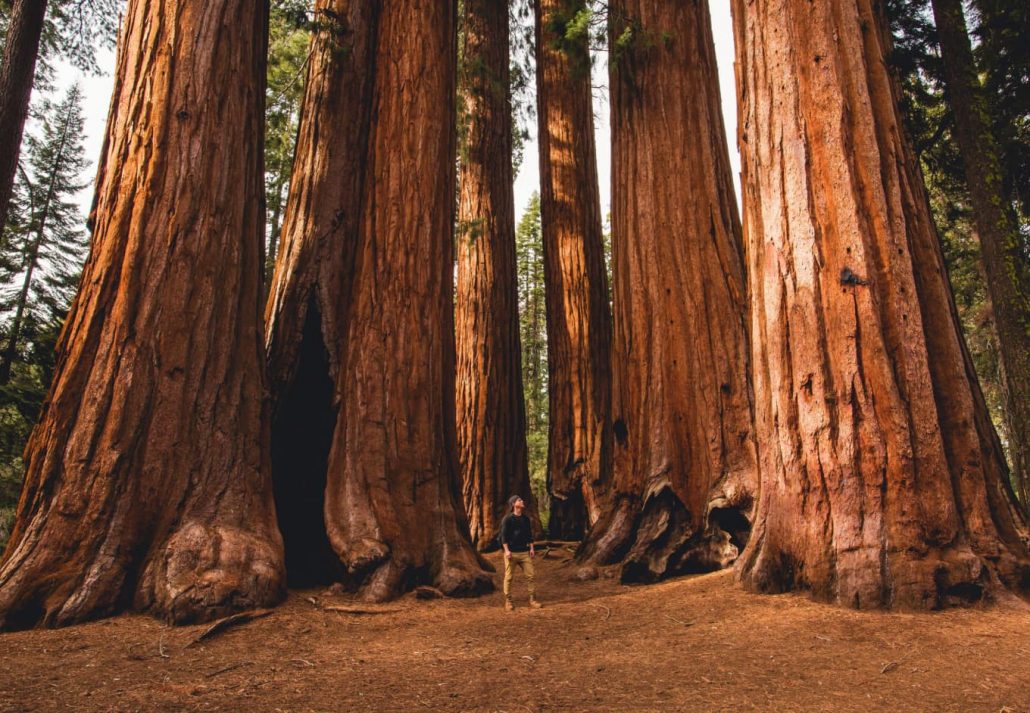
The Redwood National and State Parks are a complex of one national park and three state parks located along the coast of northern California.
This achingly beautiful park is known for protecting 45% of California’s coast redwood (Sequoia sempervirens). Reaching impressive heights of 367 feet, these majestic trees old-growth trees are the tallest on Earth.
In addition to the spectacular redwood forests, the parks preserve other indigenous flora, fauna, grassland prairie, oak woodlands, rivers, and 40 miles of pristine coastline.
There are several ways of uncovering the natural marvels of the Redwood National Park. Visitors can enjoy a host of scenic drives, which wind ancient forests, upland prairies, and oak woodlands.
More than 200 miles of trails offer visitors a chance to explore the stunning natural beauty of the redwoods up close, while the park’s beaches provide a serene and peaceful place to relax and take in the ocean views.
During your adventurous errands at Redwood National Park, you’ll also have close encounters with mountain beavers, chipmunks, raccoons, California brown pelicans, and other fascinating creatures.
Location: 1111 Second Street, Crescent City, CA
Best time to visit Redwood National Park: The best time to visit Redwood National Park in California is during the summer months of June through August when temperatures are milder and the weather is more predictable.
However, the summer is Redwood’s peak tourist season, so the park can be crowded.
If you prefer fewer crowds and don’t mind cooler temperatures, consider visiting in the spring or fall when the weather is still pleasant, and the crowds have thinned out.
Keep in mind that the park is located on the northern coast of California, which means that it can be rainy and foggy throughout the year.
It’s always a good idea to check the weather forecast before your visit and bring appropriate clothing and gear.
Channel Islands National Park
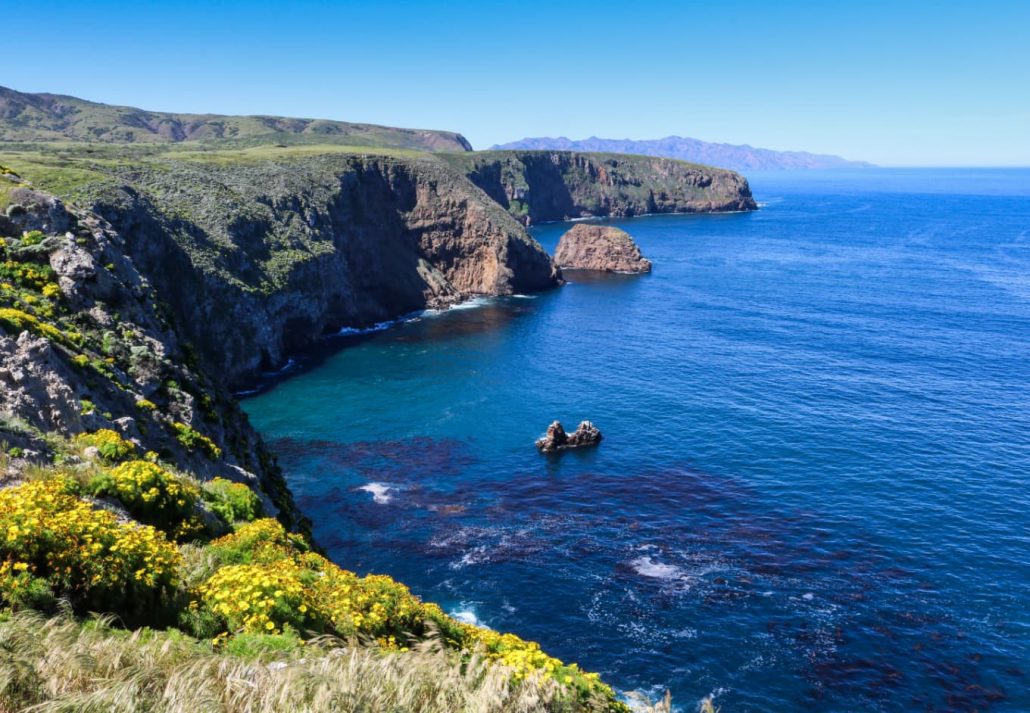
Channel Islands National Park is a hidden gem located off the coast of Southern California. Consisting of five islands and their surrounding waters, the park protects over 249,354 acres of pristine wilderness.
Nicknamed the “Galapagos of North America”, the park is home to a variety of unique features, including rocky shores, sandy beaches, sea caves, and kelp forests. These ecosystems provide habitat for over 2,000 species of plants and animals, many of which are found nowhere else on Earth.
Some of the wild creatures you’ll see while exploring the Channel Islands National Park are the spotted skunk, the island fence lizard, and the Channel Islands fox, all native to the islands.
You’ll also get the chance to spot harbor seals, California sea lions, dolphins, and even the blue whale, the largest mammal in the world.
Tried and true activities here include hiking, camping, snorkeling, and wildlife viewing. The Channel Islands National Park is also known for its large number of dreamy sea caves, which can be seen during kayak tours.
Location: 1901 Spinnaker Drive, Ventura, CA
Best time to visit Channel Islands National Park: The best time to visit Channel Islands National Park is during the spring months of March through May and the fall months of September through November.
During these months, the weather is mild, and the wildlife is more active, providing better opportunities for hiking, kayaking, and whale watching.
The summer months can get quite hot, and winter can be rainy and windy, so it’s best to plan accordingly.
Additionally, it’s worth noting that the park can be quite popular during the summer months, so if you’re looking to avoid crowds, the shoulder seasons may be a better option.
Pinnacles National Park
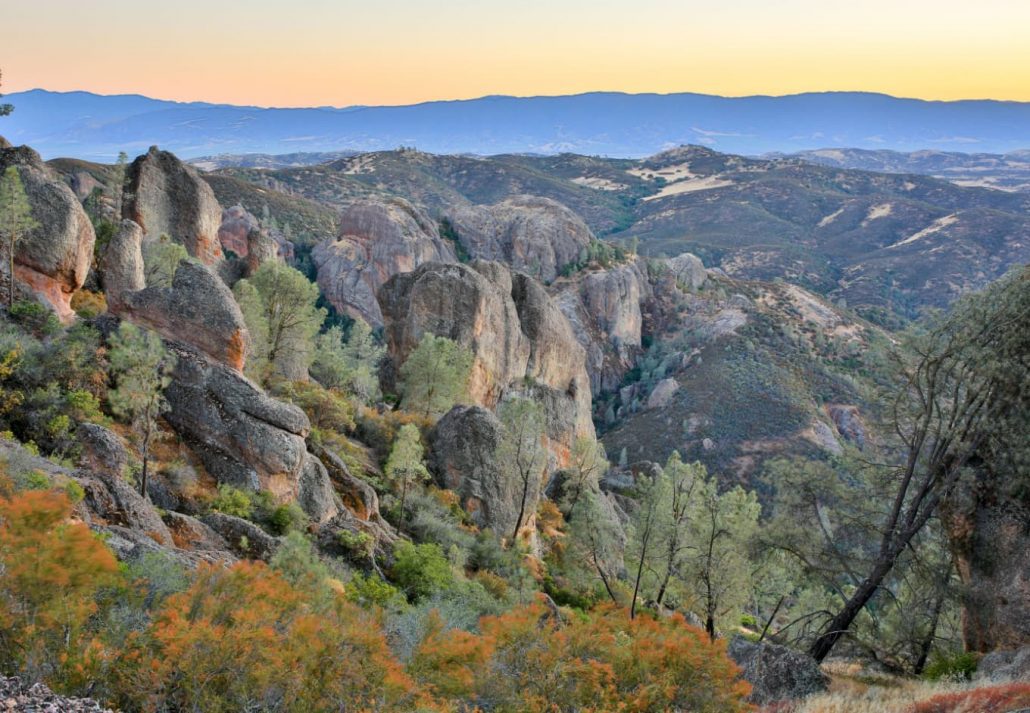
Nestled in the Salinas Valley, just a few hours’ drive south of San Francisco, lies the Pinnacles National Park, the newest park added to California’s National Park System.
It comprises an area of more than 26,000 acres showcasing a variety of landscapes and ecosystems such as oak woodlands, chaparral, and riparian habitats.
One of the park’s most distinctive features is its towering rock formations, formed from an ancient volcanic eruption over 23 million years ago. These formations are divided into East and West, and connected only by foot trails.
Visitors can hike through narrow canyons and up steep cliffs to explore the park’s many trails and take in stunning views of the surrounding landscape. Camping, rock climbing, and birdwatching are also available.
The park is also home to a diverse range of wildlife. While hiking the local trails, you’ll find unique talus caves that house at least 13 species of bats, and come across several animals like prairie falcon, coyote, skunk, great horned owl, and the endangered California condor and the Pinnacles nightshade.
Location: 5000 Hwy 146. Paicines, CA
Best time to visit Pinnacles National Park: The best time to visit Pinnacles National Park in California is during the spring or fall when the weather is mild and pleasant.
During the summer months, temperatures can reach up to 100°F, making it too hot for some visitors to enjoy outdoor activities.
Winter is also an option, but some areas of the park may be closed due to snow or ice.
Spring brings blooming wildflowers and migratory birds, while fall offers cooler temperatures and the chance to see the park’s wildlife preparing for winter.
Sequoia & Kings Canyon National Park
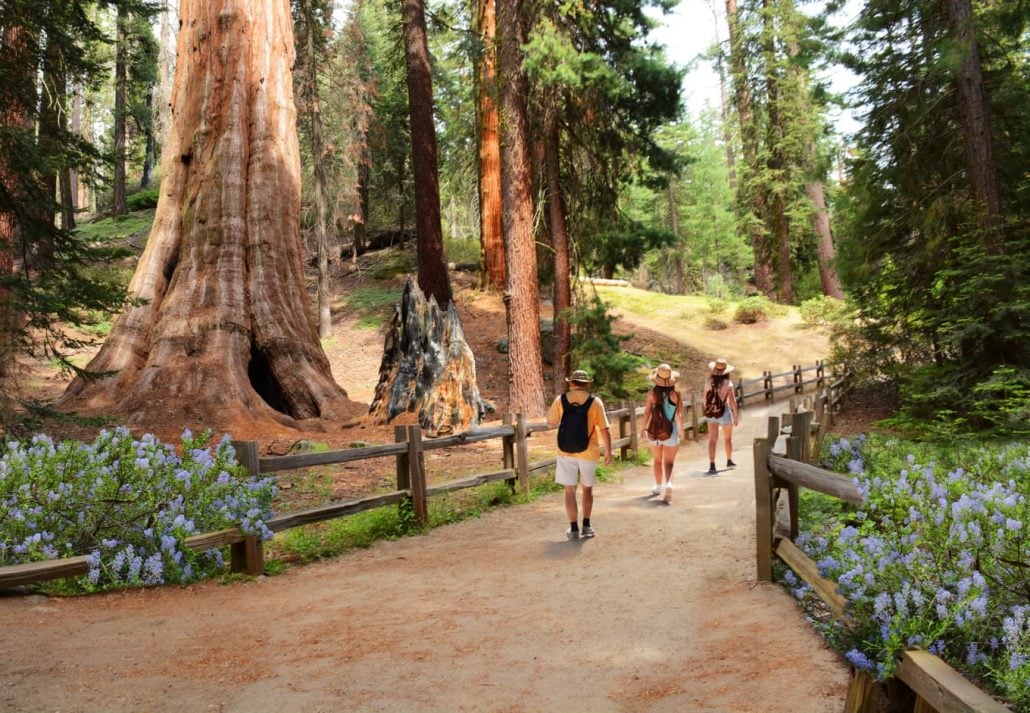
Sequoia and Kings Canyon are technically two separate parks, but both are managed together and share the same borders (and entrance fee). That’s why they’ve earned a single spot on the list.
Established in 1890 after Yellowstone National Park, Sequoia National Park is the second oldest national park in the USA.
It is located in the southern Sierra Nevada mountains, in central California, and it’s well-known for harboring the giant sequoia trees. They can grow between 250 to 275 feet tall, making them the largest trees on the planet.
One of Sequoia National Park’s most treasured sights is the General Sherman Tree, the largest tree in the world by volume.
You can find this incredible tree and more giants in the area named Giant Forest, one of several giant sequoia groves in the park.
Aside from massive trees, the park is covered by foothill woodlands, montane forests, subalpine forests, and alpine forests. These alluring environments are inhabited by a rich fauna that includes coyotes, black bears, and sheep, as well as 11 species of woodpecker, various species of turtle, 3 species of owl, and more creatures.
You can enjoy a variety of activities at the park, including hiking, camping, rock climbing, fishing, and horseback riding.
The park also features several scenic drives, such as the General’s Highway, which takes visitors through some of the park’s most beautiful landscapes.
Kings Canyon, named after a rugged glacier-carved valley of more than a mile, is also home to a variety of ecosystems, including subalpine forests, alpine meadows, and chaparral woodlands.
There are over 800 miles of hiking trails in the park, ranging from easy nature walks to challenging backcountry treks, that’ll take you to explore these eye-popping landscapes.
Another worth-experiencing activity in Kings Canyon is driving down Kings Canyon Scenic Byway will take you to General Grant (aka the Nation’s Christmas Tree), the second largest tree in the world. Be sure to also stop to see the Roaring River Falls, a powerful waterfall that plunges 40 feet into a granite basin.
Location: 47050 Generals Hwy, Three Rivers, CA
Best time to visit: The best time to visit Sequoia and Kings Canyon National Parks is during the summer months, from June to September, when the weather is warm and dry, and the roads and trails are open.
However, the shoulder seasons of spring and fall can also be great times to visit, with fewer crowds and cooler temperatures.
Winter is a popular time for snowshoeing and cross-country skiing, but some areas of the parks may be closed due to heavy snowfall.
It’s important to note that the parks are at high elevations, and temperatures can drop significantly at night, so visitors should come prepared with warm clothing and gear.
Other Beautiful Parks To Visit In California
Mojave National Preserve
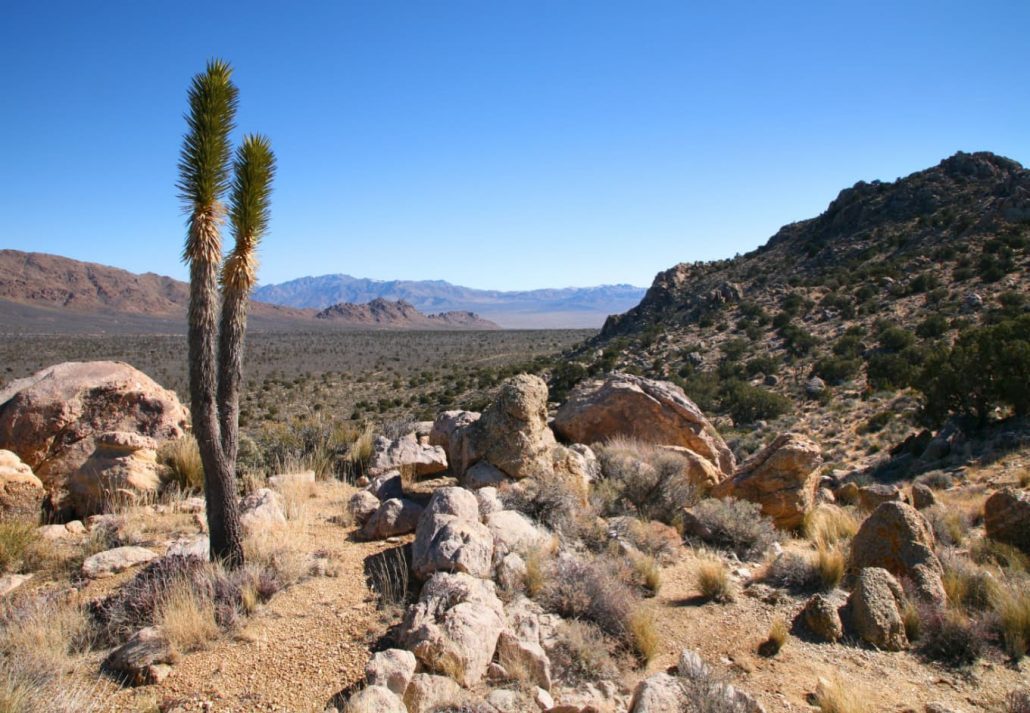
Situated in the heart of the Mojave Desert in Southern California, the Mojave National Preserve is a hidden gem that captivates nature lovers from all over the world.
This vast wilderness area covers 1.6 million acres and is home to a wide range of ecosystems, from stunning rugged mountains to sprawling sand dunes.
Outdoor enthusiasts visiting the Mojave National Preserve can discover a variety of plant and animal species, including the iconic Joshua trees and elusive desert tortoises.
The park’s top natural features include the Kelso Dunes, the Lava Tube, and the majestic Cima Dome.
Towering over 600 feet, the Kelso Dunes are a sight to behold, and visitors can even hear the sand singing under their feet.
Created by volcanic activity, the Lava Tube is a unique cave-like structure that visitors can explore on a guided tour.
Finally, the Cima Dome, a granite monolith rising over 1,500 feet, is a favorite spot for hikers and climbers alike.
Activities at the park are endless, from hiking and camping to stargazing and birdwatching.
Location: 90942 Kelso Cima Rd, Essex, CA
Best time to visit the Mojave National Preserve: The best time to visit the Mojave National Preserve in California is during the fall and spring months when the weather is mild and comfortable for outdoor activities.
From October through May, temperatures range from 15°C to 26°C, making it the perfect time for hiking and exploring.
Summer months, from June through September, can be scorching with temperatures frequently exceeding 38°C, making outdoor activities uncomfortable and potentially dangerous.
Point Reyes National Seashore
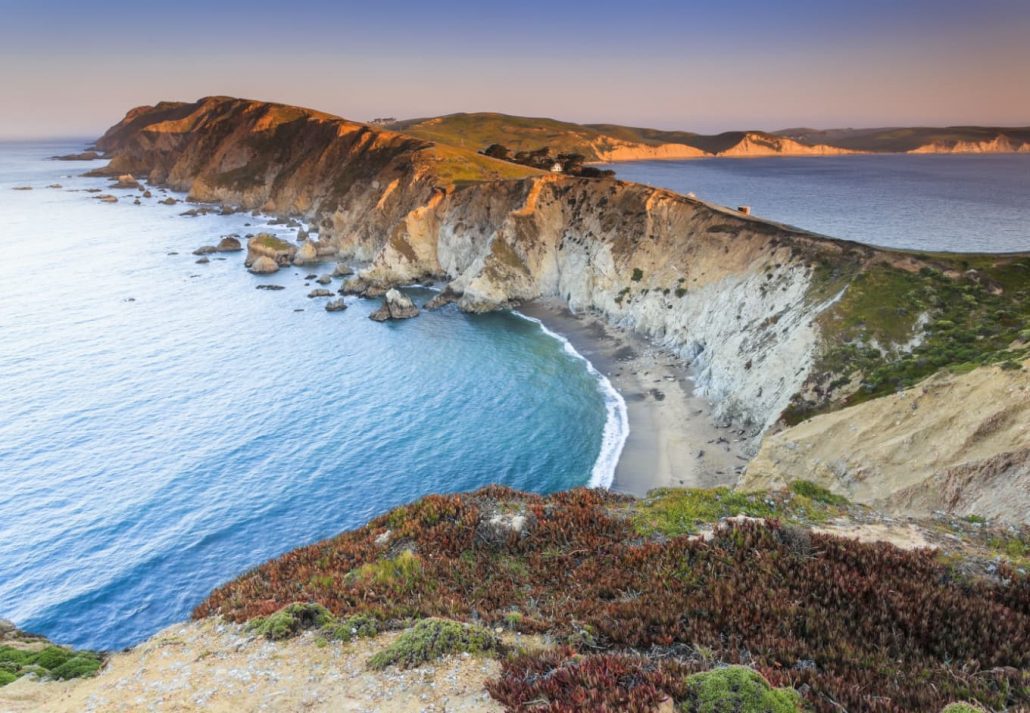
Located just a short drive from San Francisco, Point Reyes National Seashore is a paradise for nature lovers and adventure seekers alike.
What makes this preserve unique is its diverse ecosystem and breathtaking scenery. The park spans over 71,000 acres and has more than 1500 plant and animal species.
Point Reyes, is also home to the iconic Point Reyes Lighthouse, which sits on a dramatic cliff overlooking the Pacific Ocean.
Visitors can also explore the park’s stunning beaches and dunes, hike the local rolling hills, or kayak through the glittering Tomales Bay.
If you’re looking for things to do, Point Reyes has plenty to offer. Take a picnic and relax at one of the many scenic spots, such as Drake’s Beach or Limantour Beach.
Hiking enthusiasts can choose from a variety of trails. These include the Alamere Falls Trail, which leads to a picturesque waterfall cascading into the ocean, and the Chimney Rock Trail, offering stunning views of the rugged coastline and the park’s famous elephant seals.
A 35–40 minute drive from the Bear Valley Visitor Center will take you to the Tule Elk Reserve, a 2,600-acre preserve where 300 to 400 tule elk roam free.
Location: 1 Bear Valley Rd. Point Reyes Station, CA
Best time to visit Point Reyes National Seashore: The best time to visit Point Reyes National Seashore in California depends on the activities you plan to do and your personal preferences.
Generally, the park has mild weather year-round, but summer is the peak season when the weather is the warmest and driest. Late summer to early autumn is also the best time to see the tule elk.
However, summer is also the busiest season, so if you prefer to avoid crowds, it’s better to plan your visit in the shoulder seasons of spring and fall.
Winter is also a great time to visit for wildlife viewing and storm watching, but some areas of the park may be closed due to seasonal weather conditions.
Muir Woods National Monument
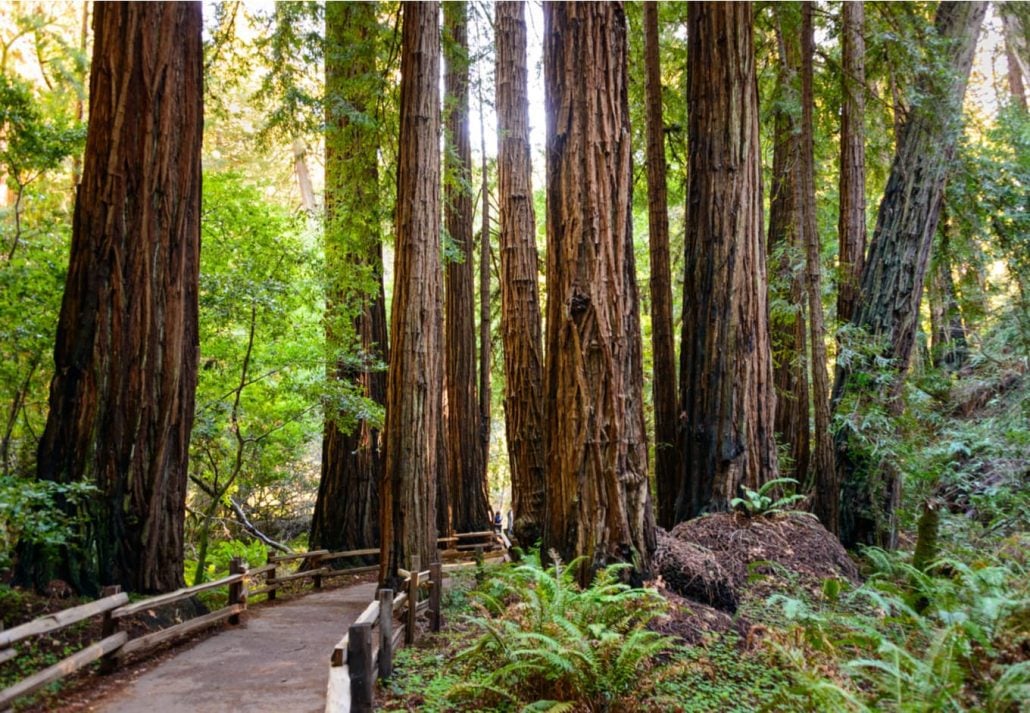
Located right across the Golden Gate Bridge, on the Marin Peninsula, Muir Woods protects 554 acres of old-growth redwood forest.
Aside from preserving one of the last remaining coastal redwood forests in Northern California, the park is home to an awe-inspiring diversity of flora and fauna.
Here, you’ll have the chance to get face to face with over 50 species of birds, including the rare spotted owls, as well as coyotes, butterflies, and the Pacific banana slug, the largest land slug in North America!
There are 6 miles of trails visitors can hike to catch a glimpse into the beautiful old-growth coast redwoods.
Location: Mill Valley, CA
Best time to visit Muir Woods National Monument: The Muir Woods National Monument is a beautiful place to visit any time of year. But the spring months from March to May are particularly a great time to visit as the flowers are in bloom, and the weather is mild.
During the fall months from September to November, the weather is still pleasant, and the crowds are smaller.
Torrey Pines State Natural Reserve
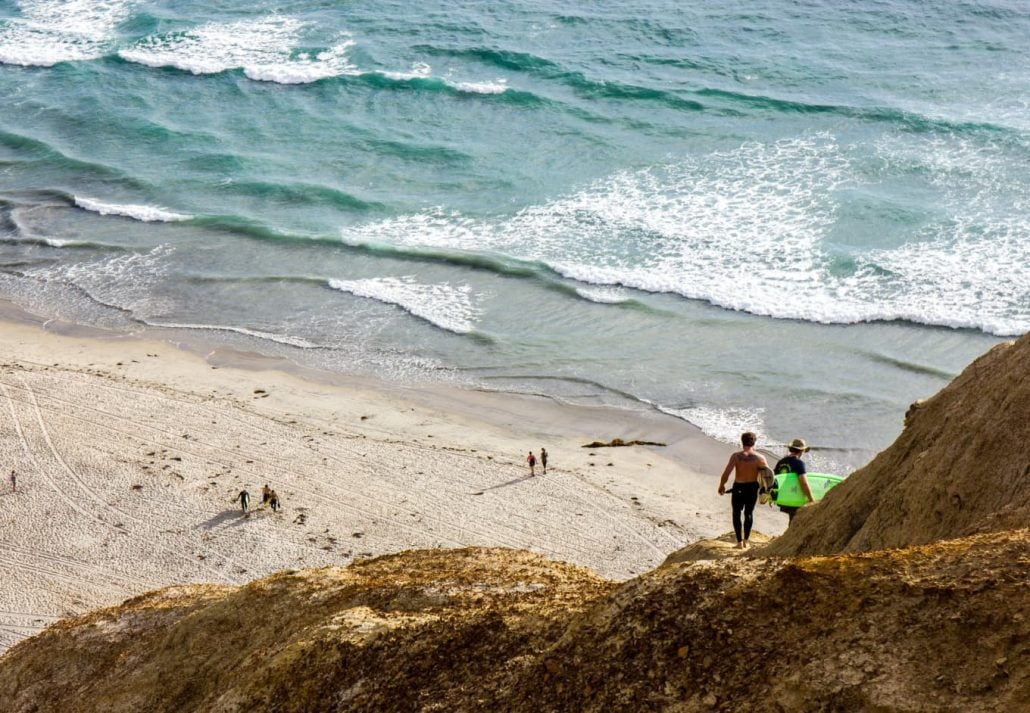
Torrey Pines State Natural Reserve is a 2,000-acre coastal state park located in the community of La Jolla, in San Diego.
This alluring state park encompasses maritime chaparral, the rare Torrey pine, which grows only here and on Santa Rosa Island, miles of unspoiled beaches perfect for surfing, unique geological formations, and a lagoon vital to migrating seabirds.
Must-sees in the park include the rugged Torrey Pines State Beach. Framed by 300-foot sandstone cliffs of white and golden stone, it’s considered one of the most beautiful beaches in California.
Be sure to also check out the impressive sandstone formations of the Broken Hill, and the Guy Fleming Trail, which offers stunning panoramic views of the Pacific Ocean.
Location: 12600 N Torrey Pines Rd, La Jolla, CA
Best time to visit: Year-round
FAQ
How many national parks are in California?
The 9 California national parks are:
- Joshua Tree National Park;
- Yosemite National Park;
- Death Valley National Park;
- Lassen Volcanic National Park;
- Redwood National Park;
- Channel Islands National Park;
- Pinnacles National Park;
- Sequoia National Park;
- Kings Canyon National Park.
What is the name of the most famous national park in California?
Yosemite National Park is perhaps the most popular of the California national parks.
How far is Yosemite from Sequoia?
Yosemite and Sequoia are about 2h30 away, or just under 140 miles.
What is the #1 national park in the USA?
With 12,937,633 visitors in 2022, the Great Smoky Mountains National Park is the most visited national park in the United States.
What national park is closest to Yosemite?
Kings Canyon National Park is the closest national park to Yosemite.
Can you do Yosemite and Sequoia in a day?
While you can do Yosemite and Sequoia in a day, this will leave you very little time in each park. Plan for at least one day in each park.
How far is Yosemite from San Francisco?
Yosemite is about 170 miles away from San Francisco and about a 4-hour drive.
Are 2 days enough for Yosemite National Park?
Spending 2 Days in Yosemite gives you the perfect amount of time to see the park’s natural features, and enjoy some scenic hikes.
Can you do Yosemite in 1 day?
You can visit Yosemite in one day. You’ll get the chance to see the park’s main attractions like the Yosemite Falls Viewpoint, Bridalveil Fall, and the El Capitan meadow.
How many days in Yosemite is enough?
Plan on spending two to four days in Yosemite. This will give you enough time to see all the park’s stunning natural features and enjoy an array of thrilling experiences.
What are the best and worst months to visit Yosemite?
Late spring and summer (especially from July to September) are great times for visiting Yosemite National Park. Avoid visiting at the end of October through November, which is when rail and road closures typically, leaving the park increasingly empty thanks to snow.
Are there bears in Yosemite?
American black bears can be found in the Yosemite National Park.
What months is Yosemite closed?
Yosemite National Park is open 24 hours per day, 365 days per year. However, some roads are closed due to snow from around November through May or June.
CuddlyNest provides all accommodations to all travelers at the best price. Find unlimited travel inspiration on our blog and social media channels.
You Might Also Like:
10 Best Kid-Friendly Family Vacations In The United States
The 11 Best Long Weekend Getaways In The US
The Ultimate North America Travel Guide
10 Best Day Trips From Naples, Florida
The Ultimate Guide For a Pet-Friendly Holiday in Florida
The 15 Best National Parks In The World
Best North America Mountains
The 30 Most Beautiful Beaches in California
The 16 Most Beautiful Beaches in Southern California
The 15 Most Romantic Getaways in California
The 10 Most Romantic Getaways In Northern California
